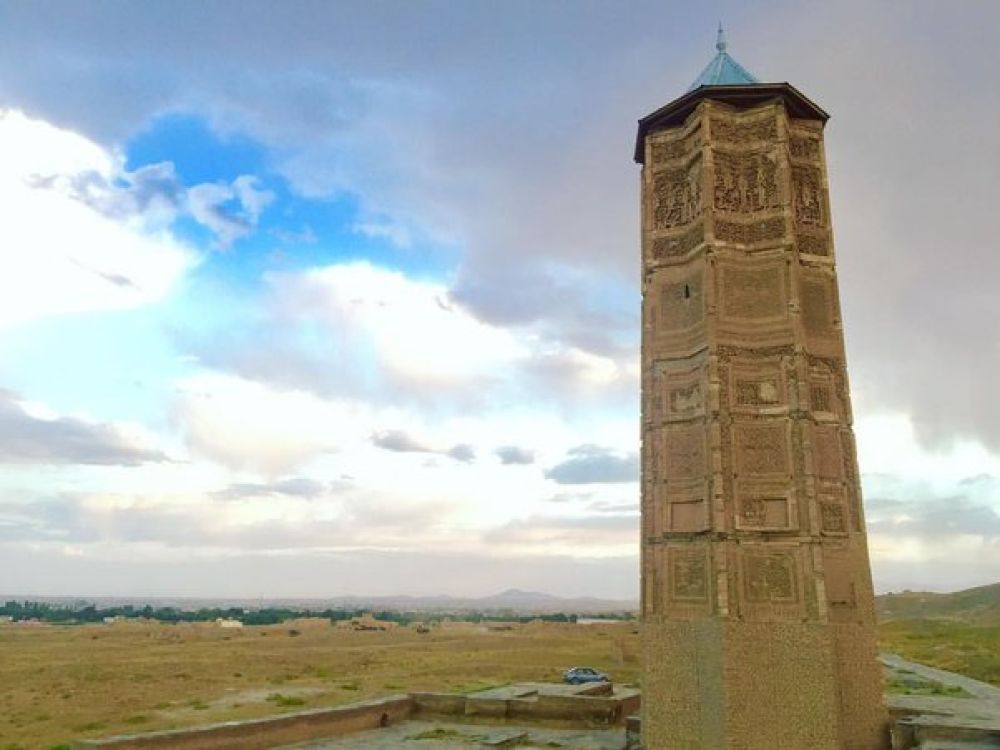

Located in the heart of Ghazni city in Afghanistan, the Ghazni Minarets stand as proud remnants of the Ghaznavid Empire's grandeur. The city of Ghazni, known historically as a vital point along the Silk Road, connected the East and West, facilitating trade, cultural exchange, and the spread of Islam.
The Ghazni Minarets date back to the early 12th century, erected during the reign of the powerful Sultan Mahmud of Ghazni and his successors. These minarets are all that remain of what was once a sprawling palace and mosque complex. The minarets are adorned with intricate geometric patterns and Kufic inscriptions, making them significant examples of Islamic architecture and art.
Tourism in Ghazni and around the Minarets has been a complex affair, heavily influenced by the political and security situation in Afghanistan. The site attracted scholars and architecture enthusiasts from around the world, especially during the times when Afghanistan was a more accessible destination.
However, due to conflicts and instability in the region over the past few decades, tourism to the Ghazni Minarets has been sporadic. With the security concerns and the threat of damage to historical sites, international tourist numbers have been minimal. Still, the site holds great potential for cultural and historical tourism, should the situation stabilize.
In recent years, the minareths have been under threat from both natural weathering and human activity. Efforts have been made by various international organizations, in partnership with the Afghan government, to preserve these ancient structures. The Ghazni Minarets were listed on the World Monuments Watch list of the 100 Most Endangered Sites due to their historical and cultural importance, and the dangers they face.
The current trend in tourism in Afghanistan is focused on safety and preservation. The global community is increasingly aware of the importance of protecting and conserving sites like the Ghazni Minarets for future generations. While visitor numbers are low, there is hope that with peace and reconstruction efforts, sites like these could once again draw tourists interested in the rich cultural tapestry of Afghanistan.
For those considering visiting the Ghazni Minarets, it is essential to stay updated on travel advisories and the security situation. While visitors can experience the history and majesty of the Ghazni Minarets, it is paramount to prioritize safety and respect the site's historical significance.
In conclusion, the Ghazni Minarets are not just architectural marvels; they are symbolic of Afghanistan's historical wealth and resilience. The story of these structures is entwined with the hopes for Afghanistan's future as a peaceful and prosperous nation, where its cultural heritage can be celebrated and enjoyed by all.